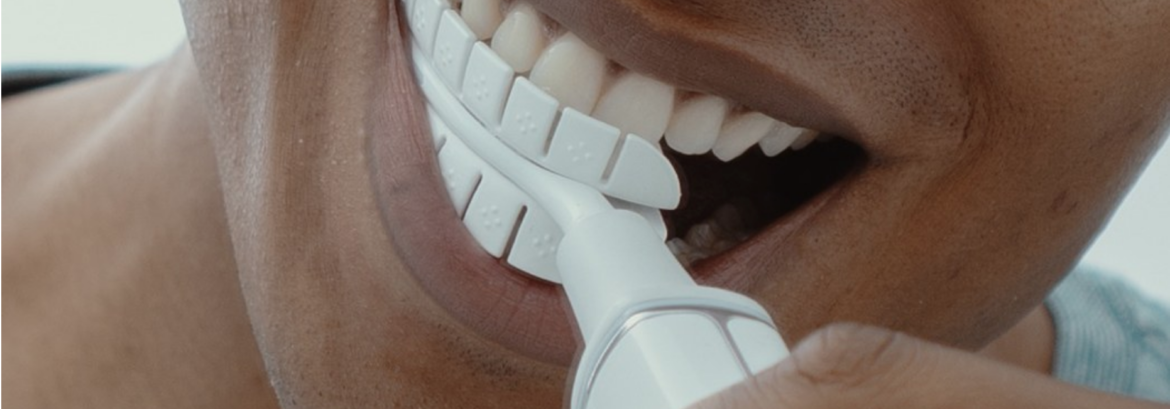When it comes to inventions that seem timeless and hard to improve on, the toothbrush must sit alongside the wheel and pizza as something that’s near the pinnacle of perfection. However, a father and son team of dentists has developed a new J-shaped toothbrush that can allow users to finish brushing in just 20 seconds.
The Encompass toothbrush can provide such a remarkably effective cleaning by basically removing the most inefficient part of brushing – the user.
By now, we all know the importance of brushing at least twice day. Not only does the habit help to remove food particles that linger in the mouth after eating, it also works to scrub harmful oral bacteria away from the surface of our teeth.
Whether you use a hypersonic/dual head/self-timed electric toothbrush, or you keep your brushing technique old school and use a traditional hand brush, the effectiveness of any type of toothbrush all depends on the person using it.
A Flaw in the Machine
According to the brush’s inventors, the Encompass was designed to reduce brushing time and effort, while also doubling efficiency, by always keeping one central idea in mind – people don’t really think about how they brush their teeth.
What sets the Encompass apart from other U-shaped toothbrushes you may have seen floated on Kickstarter or other corners of the internet is a J-shaped design. The brush’s J-shape allows it self-adjust to the shape of the user’s jaw, covering both the upper and lower teeth with bristles that vibrate at exactly 100 strokes per second. The bristles of the brush sit at the perfect position to apply the right pressure, so the brush cleans the user’s teeth at the right intensity and angle.
So, instead of taking your teeth to a car wash, the Encompass is more like sitting on a masseuse’s table, with the bristles gently massaging your teeth.
Whether the Encompass can live up to the claim made by its inventor remains to be seen. Dr. Feldmanis hasn’t had the opportunity to try out the brush, and therefore cannot recommend whether patients should give it a try.
However, this type of brush does bring up an important fact we shouldn’t ignore – Only 1 in 10 people know how to correctly brush.
The Importance of Proper Brushing
Roughly 90 percent of cavities are caused by the use of an improper brushing technique or by not brushing enough.
This speaks to the destructive power of plaque, the harmful oral bacteria most responsible for the development of cavities and gum disease.
When done incorrectly, brushing can not only miss deposits of plaque and food that remain in the mouth, the habit can also cause damage to occur to the health of patient’s teeth and gums.
Overbrushing occurs when too much force is used when brushing. The excessive friction overbrushing creates causes tooth enamel to become worn down and for gum tissue to become inflamed.
Brushing too frequently can also have negative consequences, as repeatedly performing the same brushing technique can cause the type of friction that can eventually lead to enamel erosion and thinning.
If curious whether your brushing technique meets the standard for success, take a look at this video from the ADA on how to properly bush.
If you have any questions about the best technique for successfully brushing, make sure to ask Dr. Feldmanis during your next appointment.


Sorry, comments are closed for this post.